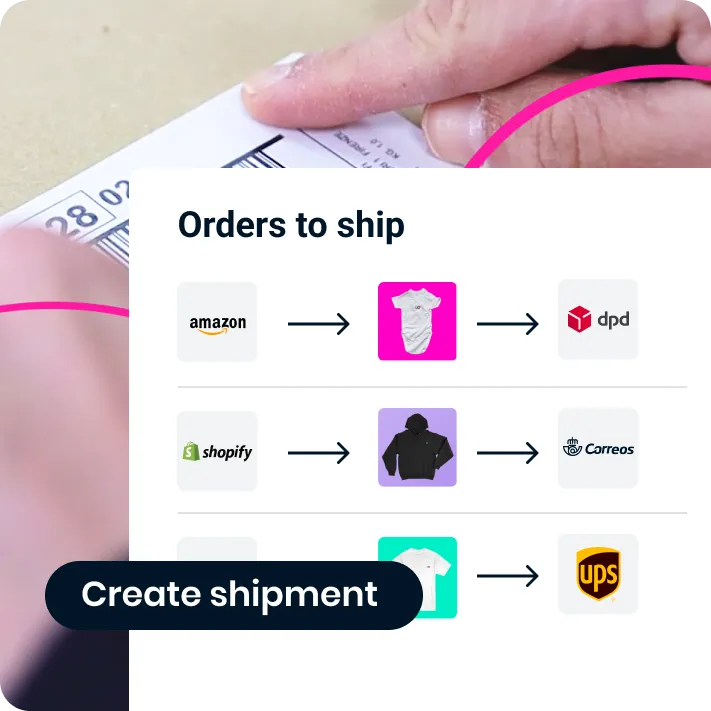How to expand your e–commerce business to the US market
The USA is the world’s largest economy, with a thriving online shopping scene. If you’re a merchant with an e–commerce store in Europe, you might be thinking about branching out and selling to customers in the United States. It offers a great opportunity to expand your e–commerce store and reach a whole new market.
But how can you approach it? What do you need to consider? How is selling in the USA different to selling in Europe? To answer all of your questions here at ShippyPro we’ve put together this guide on how to expand your e–commerce business to the US market.
US e–commerce market trends
When you’re considering expanding to a new country, it’s crucial that you have a good understanding of what the market is like there. Luckily for e–commerce retailers, the online market in the USA is ever-expanding. It’s predicted that, by 2021, there will be 230.5 million online shoppers in the States. According to another Statista forecast, retail online sales – that amounted to $343.15 billion in 2019 – are projected to reach $476.5 billion in 2024. It’s clear that this is a market that’s really going places.
The number of US shoppers buying from sellers outside the United States is also on the rise. In 2016, 69% of online shoppers only bought from e–commerce retailers in the US, with 28% buying from both domestic and cross-border retailers, and 4% buying from cross-border retailers only. By 2018, these figures were different: 66% bought from domestic sellers only, 27% from a mixture of domestic and cross-border sellers, and 7% solely from international sellers. This suggests that there’s an increasing trend in the number of US shoppers who are looking to other markets to make their purchases.

Top products and categories for US e–commerce buyers
Shoppers in the USA shop online for a variety of products, but the fashion and technology sectors lead the way. As of November 2017, the most popular products bought online by US customers were:
- Fashion clothing and accessories (71% females, 49% males)
- Health and beauty products (54% females, 33% males)
- Books, CDs and other physical media (46% females, 45% males)
- Technology products (31% females, 49% males)
- Home and furniture (31% females, 28% males)
Specifically on Amazon, in 2019, the most popular products were:
- Electronics (44%)
- Clothing, shoes and jewellery (43%)
- Home and kitchen (39%)
- Beauty and personal care (36%)
- Books (33%)
- Cell phones and accessories (28%)
- Movies and TV (25%)
- Pet supplies (20%)
- Sports and outdoors (17%)
- Grocery and gourmet food (15%)
- Car parts and accessories (13%)
There’s a good scope of opportunity for retailers in all sectors, although fashion and technology are the most popular for US online shoppers. The aim for your business is to stand out against competitors in your sector, selling from both inside and outside the USA.
Increase of mobile shopping
A rising number of shoppers are using their smartphones to make purchases. With the technology to browse, compare prices between retailers, and buy products all at their fingertips, the battle to stand out is fiercer than ever before.
In 2021, it’s expected that over half (54%) of all retail e–commerce will be generated by mobile platforms. And it’s not just traditional search engines that shoppers are using to discover their new favourite products. Social media is becoming increasingly important for shoppers in the US – in fact, 48% of online shoppers in the States have purchased products or services which they discovered through social media platforms.
That means that it’s essential for your business to be available and visible to customers not just on desktop platforms, but also on mobile.

US shopping behaviour
When it comes to shopping online, customers in the USA primarily make their purchase decisions based on competitive pricing, according to a survey carried out in October 2019. 70% said that this was the most important factor that influenced them to shop with a particular online retailer. The cost of shipping is another key factor, with 62% stating that free shipping was a major consideration when choosing which online retailer to purchase from.
According to a 2019 report by JP Morgan, the preferred way for US customers to shop online is on mobile. However, shopping in retailers’ apps is also popular.
App-based sales account for 55% of all mobile e–commerce transactions, thanks to their ease of use and fast payment options. In the States, the leading apps by the number of downloads include Amazon, Poshmark and Letgo. The sales figures for e–commerce transactions on different devices in 2017 is as follows:
- E–commerce completed on a mobile device: $282.8 billion
- Mobile commerce completed in-app: $156.3 billion
- Mobile commerce completed on a browser: $126.5 billion
Seasonal events like Christmas can have an impact on how people shop. During the 2018 winter holidays, mobile commerce increased by 56% year-on-year, compared to a 5% increase for desktop.
When it comes to how people actually pay for their goods, the most common method is card payments. As of 2018, Most American shoppers used a credit card to pay (44%), whilst 32% used a debit card.
An increasing number of shoppers are using digital wallets, though, particularly ‘digital natives’, i.e. young people who have grown up with access to and familiarity with high-speed internet and smartphones. Over half (55%) of e–commerce merchants have said that they’re likely to accept digital wallet payments within the next year. This includes popular platforms such as PayPal, Google Pay and Apple Pay.
Best online Marketplaces and CMS in the US
You’ve decided to expand to selling in the US, and you now have a good overview of the market. So what are the best Marketplaces to start selling on? And what CMS should you use to power your sales? Let’s take a look at some of the most popular Marketplaces and CMS in the USA.
Best Marketplaces in the US
The best Marketplace for your e–commerce business depends on what you’re looking for, and what types of products you sell. We recommend some of the most popular Marketplaces, as outlined below.
Amazon
It might come as no surprise to learn that Amazon is the most-visited e–commerce platform in the United States. In May 2020, Amazon.com had over 2.5 billion visits (combined mobile and desktop). This was a significant increase from February 2020, which saw 2.01 billion visits.
In fact, 66% of shoppers actually start their product research on Amazon. So it’s not just used for making purchases, but also for narrowing down product selection and comparing prices.
eBay
eBay is another popular Marketplace in the United States. The platform’s total revenue in 2019 amounted to $10.8 billion, a slight increase on $10.7 billion from the previous year.
Walmart
If you’ve ever been to the USA, you’ll have seen huge Walmart stores in towns and cities across the country. The brand was the leading American retailer in 2019, with sales of around $399.8 million. However, Walmart has also been focusing on e–commerce as it recognises the competition from established online Marketplaces like Amazon. e–commerce currently amounts to around 8% of Walmart’s total revenue, as of 2019, but the company is emphasising e–commerce going forward. The company’s e–commerce sales are expected to rise from $15 billion in 2017 to roughly $38 billion in 2020.
Etsy
Etsy is the ideal choice of Marketplace if you specialise in handmade, craft or vintage items. Retail sales on Etsy have increased significantly over the past few years. In 2012, Etsy’s annual revenue from the Marketplace was $55.33 million. This had risen to $593.65 by 2019, accounting for 72.5% of the company’s revenue.
In 2019, more than 2.5 million sellers sold goods through Etsy, which was up from 2.1 million in the previous year.

Best CMS in the US
There are also a host of different Content Management Systems which you can choose to use for your e–commerce store. Some of our favourites include:
WooCommerce
WooCommerce is the USA’s leading e–commerce platform with a market share of 23%. It’s designed to be used by small to large online merchants using a WordPress site, and is popular for its simplicity, and there are nearly 1.2 million e–commerce stores in the USA using WooCommerce as their e–commerce platform.
Shopify
Shopify is another popular platform in the States, with a market share of 21%. Just over one million sites use Shopify in the USA, and it supports a wide range of verticals including beauty, electronics, fashion, food and home furnishings. It offers basic templates making it easy to set up yourself.
Prestashop
PrestaShop is used by 300,000 e–commerce sites across the world, and is available in 60 different languages. It has a variety of built-in features to make it easier to manage product listings, payments, shipping, manufacturers and suppliers.
Magento
Magento is highly customisable meaning that retailers who choose to use this CMS can ensure the look and content of their store is in-line with their brand. More than 100,000 online stores have been created using Magento, and in 2019, more than $155 billion worth of goods were sold through Magento-based systems.
Ecwid
Ecwid has 6% of the market share in the USA. It’s used by over 200,000 merchants across 175 countries. It was founded in 2009 to allow small businesses to easily add online stores to their existing sites, rather than creating an entirely new store from scratch.
Start now selling to the US
Whichever Marketplaces you choose to use, and whatever CMS you use to sell products on your own site, you’re likely to be able to connect them to ShippyPro. We offer integration with 63 sales channels, making it easy for you to manage all your sales and deliveries from one handy dashboard!
Start now selling to the US with a complete shipping automated platform for your e–commerce, with useful features like:
- Label Creator, to automate the shipping labels’ creation saving time
- Track & Trace, to track your international orders from an easy-to-use platform and send branded shipping notifications useful to keep your customers up-to-date on their order status
- Easy Return, an all-in-one portal to automate and simplify the return process for both you and your customers
- Ship & Collect, which allows your customers to choose from multiple delivery options at checkout, with real-time pricing and a useful Drop Off Point Map
If you already have a ShippyPro account, all you need to do is integrate your Marketplaces or CMS. If you don’t have a ShippyPro account register now and start your free trial taking advantage of our special Peak Season offer: 500 free shipments for 30 days!
And if you are looking for tips and solutions about shipping to the US, stay tuned for the second part of this ShippyPro guide, Shipping to the US with FedEx and ShippyPro.
ShippyPro is the complete shipping software for online and offline retail. With Label Creator, Track & Trace, Easy Return and Analytics features, our software simplifies your shipping operations. ShippyPro integrates with over 160 couriers and 80 sales channels, making it compatible with a wide range of products and use cases.



